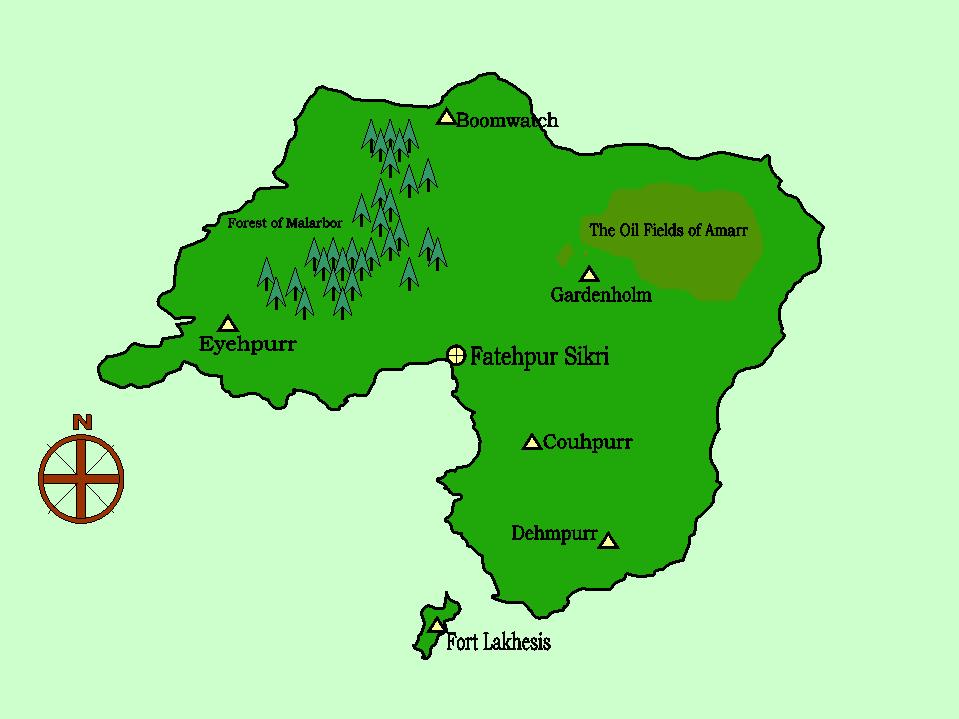Amarr

|
[[Image:{{{coat of arms}}}|100px]] |
| Feudal Status: | County |
| Capital: | Fatehpur Sikri |
| Largest Cities: | Fatehpur Sikri, Boomwatch |
|
| |
| Local Leadership Title: | Count |
| Local Government: | Feudal |
| Current leader: | Spraki Krumsson |
|
| |
| Local language: | Cisamarrese, Passikaans, Lakhesian |
| Local Religion: | Cedrism |
The County of Amarr (English pronunciation [əˈmɑː(ɹ)]) (Cisamarrese: Contea d'Amarra) is the westernmost county of continental Brookshire and forms part of the Barony of Greater Lakhesia. A multicultural society, its population is of diverse origins and numbers almost twenty-five million.
Most of Amarr belongs to the Lakesian lowlands area (In Earth-terms, Amarr is about the size of California or Sweden). The south-east of the county is generally fertile, while rocky forests cover the western half. In the north-east, large oil fields can be found.
Amarr is divided into eight patriciates named after their capital cities (Fatehpur Sikri (Fatepurra Siccre), Copurra, Dempurra, Ajapurra, Malarboria, Bambaccja and Gjardinolma and Fort Lakesia (Porto Lachesia)), each headed by a Lord Patrician (Sinjore Patrizio).
Oil is important to the economy but does not dominate it totally. One third of the work-force is in the industry and almost half of the workforce works with services while the rest are in agriculture, forestry or fisheries. Commerce is generally free, and education and schools are funded by religious congregations.
Amarr houses a diverse population divided in four estates (nobility, clergy, burgers and farmers) and in the estate-less underclass and the estateless expatriate community (freemen). The estates are represented in the States of Amarr (parliament), elected every four years. The estate-less underclass is not represented in the legislature.
Freemen: 5 %, Estateless underclass: 45%, Farmers (landowners): 10%, Burgers (urban): 30%, Clergy: 5%, Nobility: 5%,
Among the underclass, a form of Lakesian is spoken monolingually by the most. The farmers (landowners) generally speak Passikaans, the nobility and burgers speak Cisamarrese (closely related to Tellian), and the clergy speak the dominant tongue of their religion (For example, Cedrist clergy uses Praeta and the Jewish community speak a form of Hebrew).
In education, Cisamarrese and Praeta are near-universally used, making most estates literate and fluent in these languages. Among the estates, a harmonious consensus on government and its structure has formed but the underclass is never represented.
The underclass works in the industry, agriculture, doing the "dirt work".
